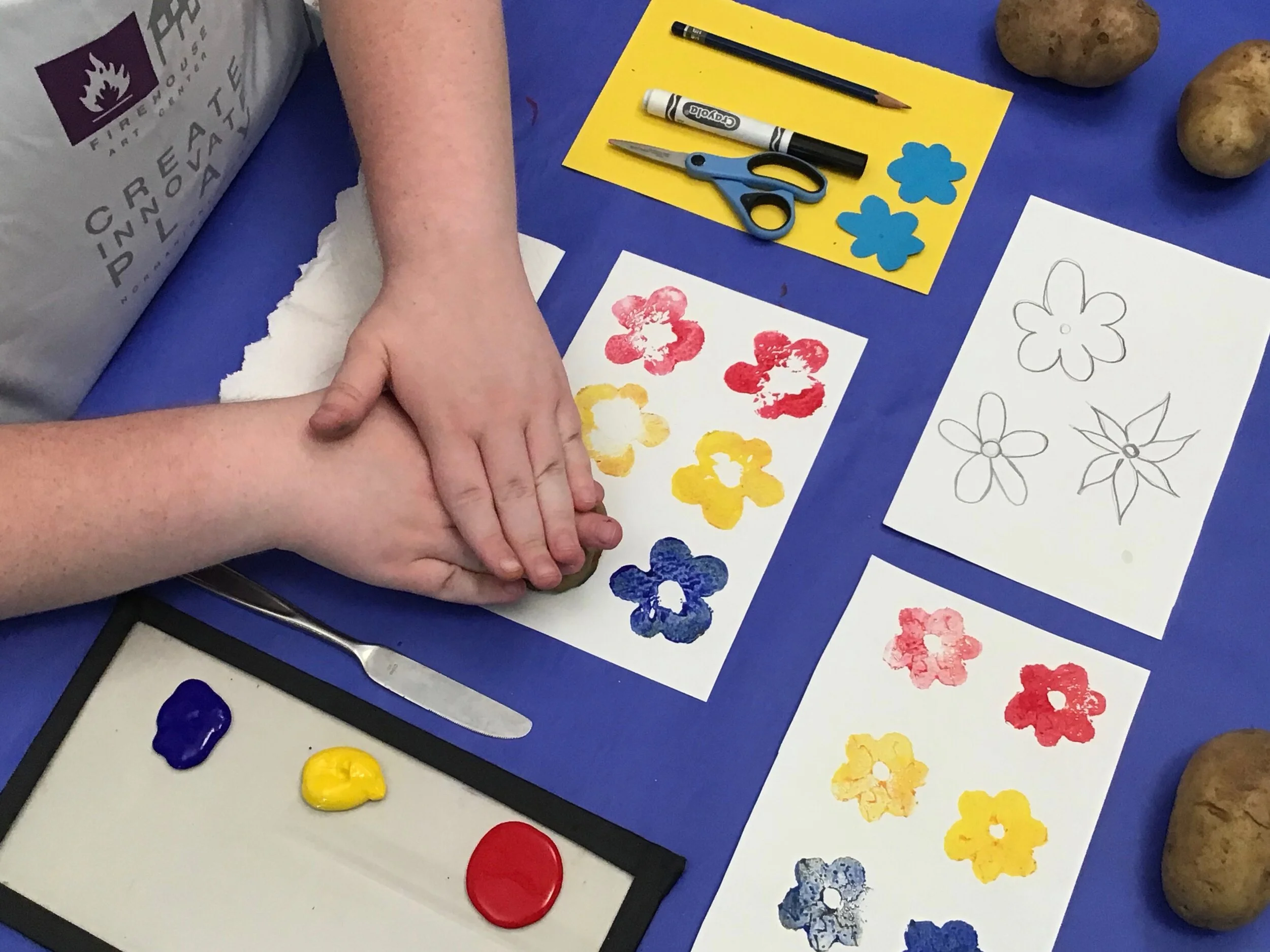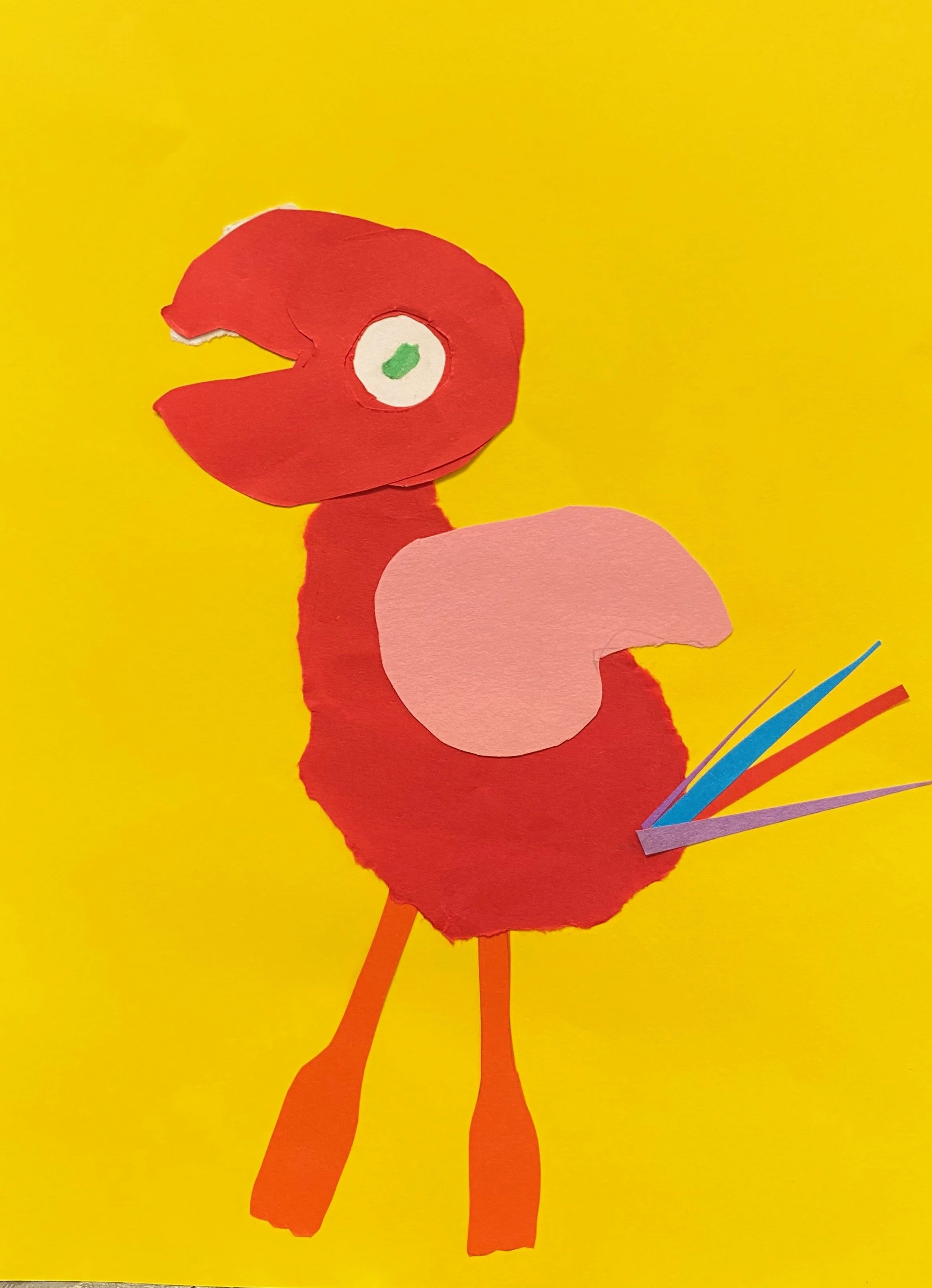An important part of art education is learning that art does not necessarily require lots of materials - sometimes the best art is made with what is around you! These sculptural projects aid in the development of fine motor skills in younger artists and can be easily accelerated and refined by the more advanced student.
Read MoreIn this project, students will use a potato and acrylic paint to create a unique relief print. Relief print originated in East Asia, and was used to create designs for dyed textiles, before being adopted by the west to express a narrative in book printing.
Read MoreThrough this lesson, students will create a monoprint from materials found at home. Monoprint is a great project for students to begin to understand the printing process and alternative methods of painting. Students can look to the work of local artist Jean Bavinger in creating their own experimental prints.
Read MoreThis lesson is helpful in developing an understanding of the structure of a basic landscape, and is foundational in student knowledge of how texture affects the overall composition. Frottage introduces students to new ways of using tools with which they are familiar and helps further the development of fine motor skills.
Read MoreDrawing with scissors is a tool that allows for students to grow creative ideas out of limited materials. Sometimes our limitations can become our strengths! Henri Matisse developed this method of artmaking to be able to continue his artistic practice and adapt to the physical limitations that came with his age.
Read MoreUnderstanding color and being able to talk about it correctly is important both in creating art and consuming it. Once you understand how colors work together, you become a better observer of the world around you!
Read More





